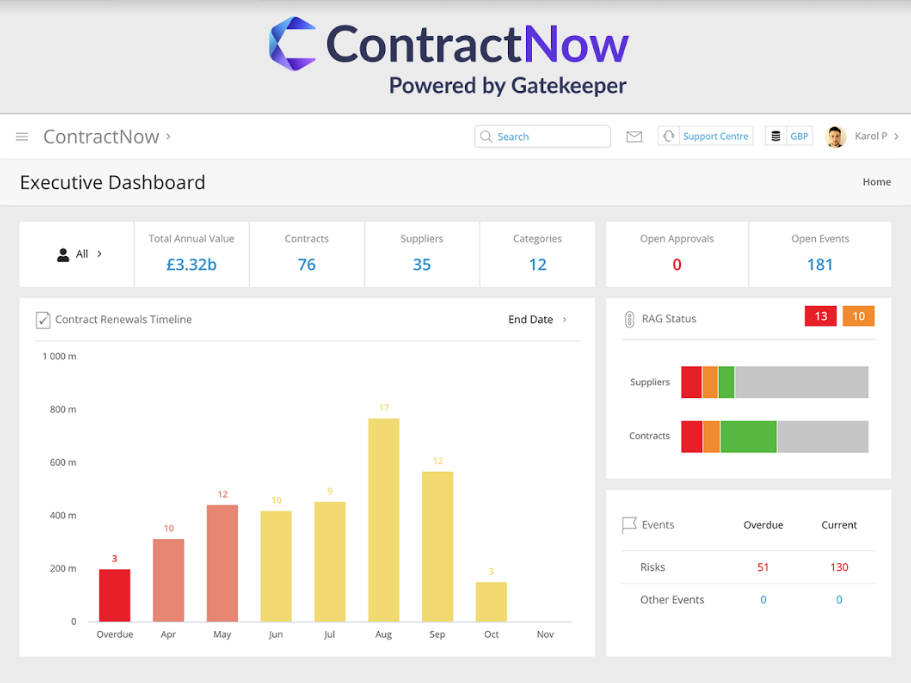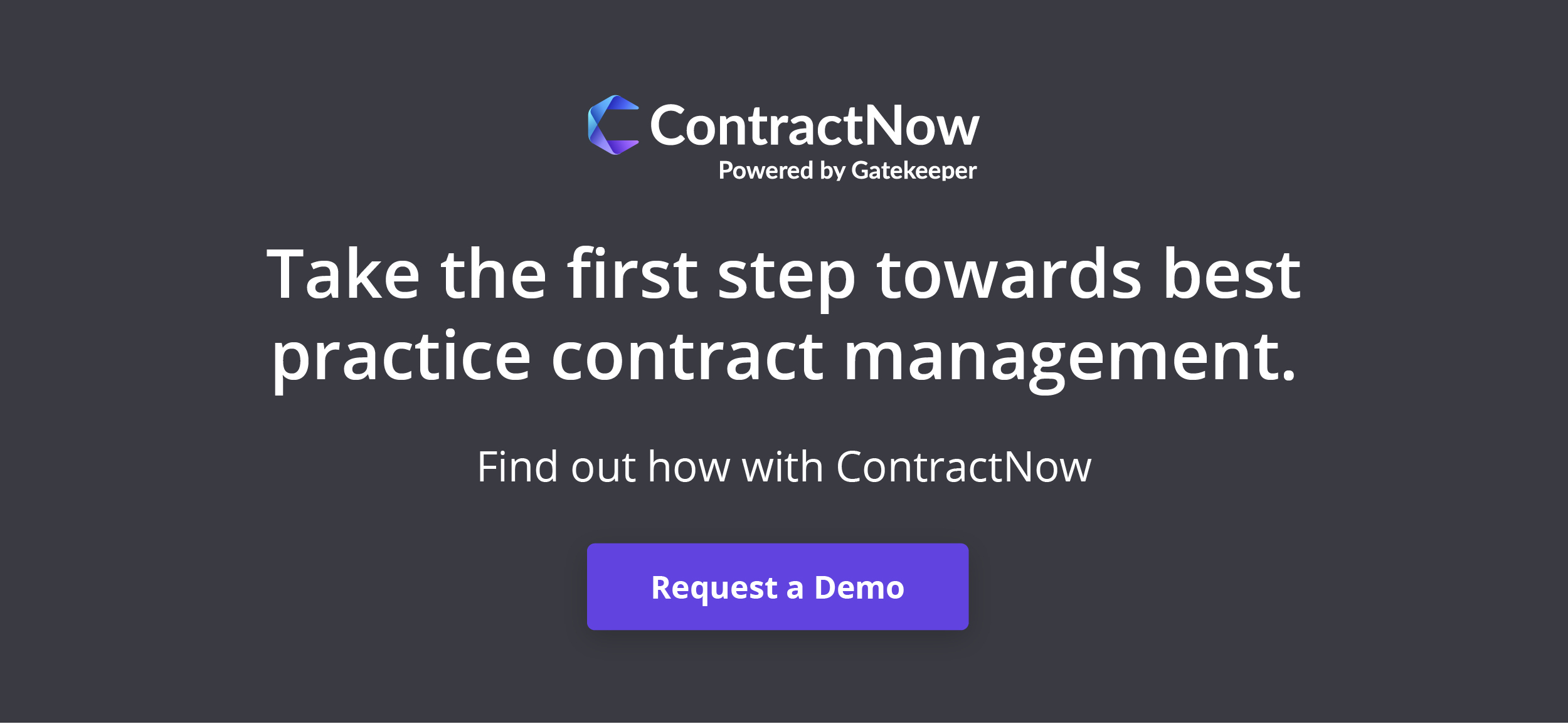Any stakeholders that have invested in contract management processes or solutions will want to know that they are making favourable returns and that a positive impact is being made across the business.
Key Performance Indicators (KPIs) are required to collate evidence of meaningful outcomes, but in the world of contract management this can feel easier said than done.
Demonstrating the tangible value of contract lifecycle management (CLM) can sometimes be difficult. The process incorporates a variety of activities that don’t always directly give way to outcomes that can be defined easily as positive or negative.
Some outcomes aren’t even quantifiable. Some CLM activities, for example, are executed with the intent of creating new efficiencies or increasing shared organisational intelligence – but what’s the best way for that to be measured?
In this article we explore this question while outlining the measurements you should be tracking to demonstrate the overall effectiveness of your contract management processes.
1. Ascertain the desired outcomes and align KPIs from there
Successful contract management processes will differ across businesses, depending on their size, their industry and their general level of maturity.
There are, however, a number of general best practices that a business should look to achieve including:
- Minimising business risk
- Reducing time to signature
- Extracting maximum value from contract agreements
- Missing fewer, ideally zero, contract renewals
- Ensuring compliance with obligations across all parties
- Optimising processes across every lifecycle stage
Contract management KPIs should include a clear definition of how it links to an outcome and how the process, activity or solution directly contributes to overall improvement.
Measurable KPIs are also required to demonstrate gains and losses in performance so you’ll need to create a baseline for comparison, set targets based on historical data and setting a realistic time period in which those targets should be met.
If your business missed six contract renewals in the past 12 months, for example, you could establish a KPI that determines that less than six renewals should be missed in the upcoming 12 months.
Tip: Remember to review performance targets regularly, ensuring that any KPIs you set out remain relevant to the business and its goals. Be mindful of targets that are met with too much ease or difficulty. These should be revised so that a better indication of performance across the business can be given."
2. Think carefully about ease of measurability
Data will be at the heart of every KPI you lay out for your business. The accessibility, accuracy and volumes of data required will all need to be questioned. Before defining a KPI, you should have an idea of:
- The data required for the KPI itself and any other data required to support evidence of outcomes
- Who creates the data, how and where they store it
- How does the data need to be tracked, updated and manipulated?
- How much time and effort is required to access the data and create a meaningful report?
Your business’s processes and capabilities may not allow for fast and accurate data collection. This could be for a variety of reasons, including your current level of contract management maturity.
If you don’t have a dedicated solution and have been working on improving manual processes, you may not necessarily have all the data you need in one place – so measuring KPIs becomes a time-consuming effort.

If you do have a contract management software in place, it may be that the access levels haven’t been set correctly for the person creating the KPI report and so data-gathering becomes convoluted as it passes multiple touchpoints. Adjust these access levels so you can benefit from data-driven dashboards that provide a clear picture of performance.
Tip: When data is hard to pull together, it tends to be dropped or overlooked. Ideally, data should be easy to gather, review and share."
3. Define ownership of KPIs
Measuring actual performance and success is a wasted effort unless the responsibility for improvements is delegated to someone. No business should set a desired outcome without dedicating relevant support to its achievement.
Defining ownership creates accountability for the delivery of the desired outcome, collection and analysis of the relevant data, consistent review of the KPI in question, decisions on how relevant the KPI remains to the business and reporting efforts.
Tip: Give someone the responsibility of following through on performance and results, otherwise setting the KPI in the first place becomes a wasted effort."
4. Choose your KPIs and define what they rely on
Contract lifecycle management requires a wide range of activities to take place at every stage so, naturally, any KPIs you set will also rely on a number of tasks being complete. This creates the opportunity to focus on performance in multiple areas but can also be somewhat overwhelming if you don’t know what to focus on first.
To help you, we’ve created a table of example KPIs and activities that you can consider across your own business.
| Key Performance Indicator | What you’re measuring | Activities required |
| Contract risk during start-up, operation, renewal and close-out | Contract related risk such as non-compliance and unexpected changes Supplier-related risk such as failure to meet obligations |
Create a checklist of potential risks and their impacts Suggest risk mitigation methods Record risk assessment outcomes per contract and per supplier and aggregate the outcomes in instances of multiple contracts and suppliers Report the outcomes |
| Value of contracts under active management | If resource and contract management processes are being focused on the most important contracts | Define contracts under active management and their importance Assign value to both attributes Calculate Value of Managed Important Contracts / Value of All Important Contracts Report the data at aggregate and split levels |
| Time to signature | Overall time taken between contract initiation and signature | Identify all activities that lead up to the signing process and create SLAs for them Record time taken for each contract to complete processes, comparing performance vs SLA Collect all information to create relevant reports Address teams that fail to meet SLA deadlines |
| Contract administration time | If resources are being deployed accurately post-signature | Define expected time to be spent on each contract Record actual amount of administration time being spent on each contract Investigate where the time was spent and hourly cost involved Assess how much work is scheduled admin vs ad-hoc work Re-designate time based on findings |
| Contract renewals | How many renewal dates are missed, how many contracts are renewed, how many renewals followed a dedicated process and the impact on the business | Assess if contract renewals were automatically renewed, configured for auto-renewal, or simply terminated Define if renewals contributed value or if terminations were regrettable Report renewal statistics |
| Contract milestones | Ongoing health of relationships and if contract obligations are being fulfilled | Create a central record of all milestones, their dates and required actions Record whether or not milestones are met, with commentary on fulfilment performance Review which proportions of contracts complete their lifecycle and meet all milestones |
| Contract consistency and language | The extent of contract changes and the associated costs and time consumed | Define preferred standard clauses and suitable alternative, a way to identify them Define a way to categorise different clauses such as standard, subject and differences between two clauses in the same category Determine if subject clauses are different from standard clauses and report any existing differences, along with their grades Report any deviations from standard in any contract Log outcomes and review processes |
Conclusion
Contract lifecycle management should be a granular process, with dedicated activities occurring at each stage. This opens huge opportunities to review the performance of different parts of the process and make required enhancements based on results.
Your chosen KPIs should be aligned to the overall desired contract management outcomes and they should provide a good basis for improving performance during a designated period of time.
KPIs shouldn’t remain static and should be reviewed regularly to ensure they are always relevant to the business’s goals. The process of data collation and analysis for reporting also shouldn’t be too cumbersome – after all, measuring performance is done with the intent of improving results and propelling your business further, rather than adding another process that holds it back.
If you’d like to start measuring contract management performance with a dedicated solution, request a demo of ContractNow.




